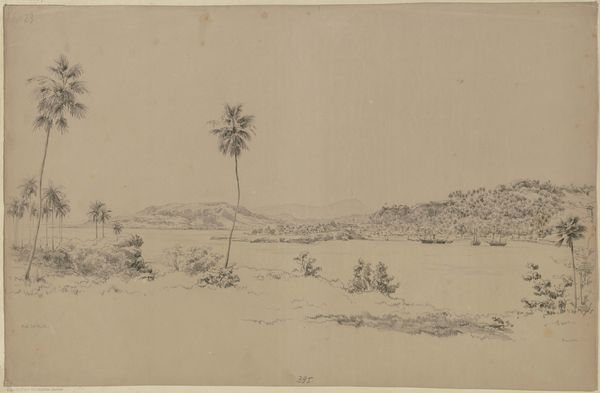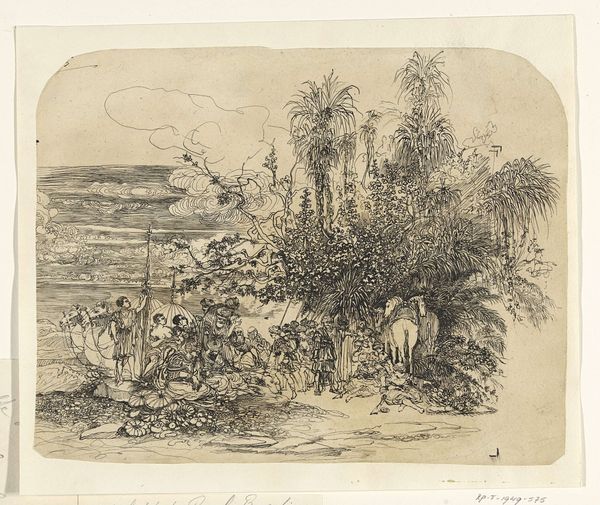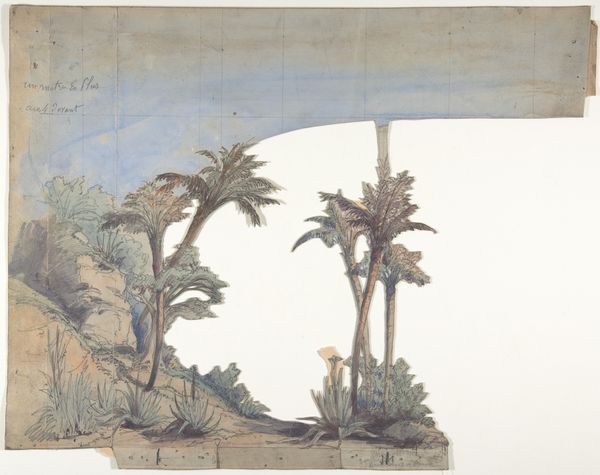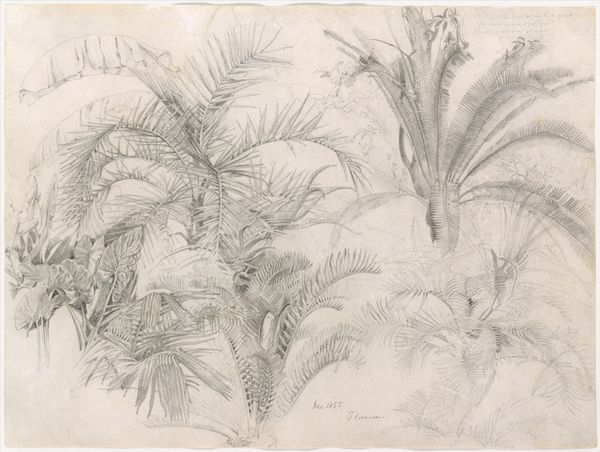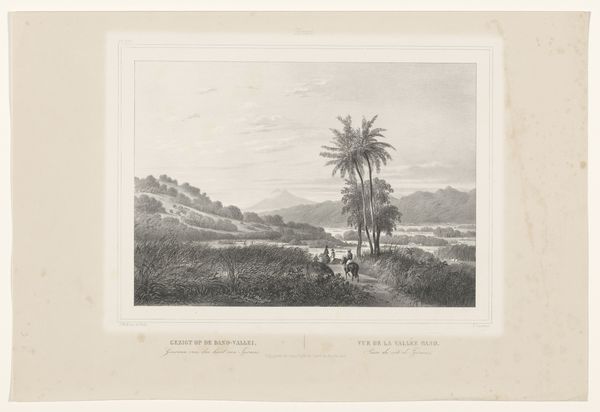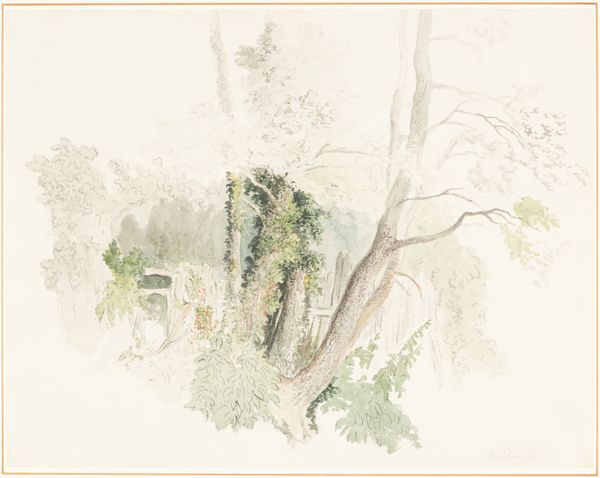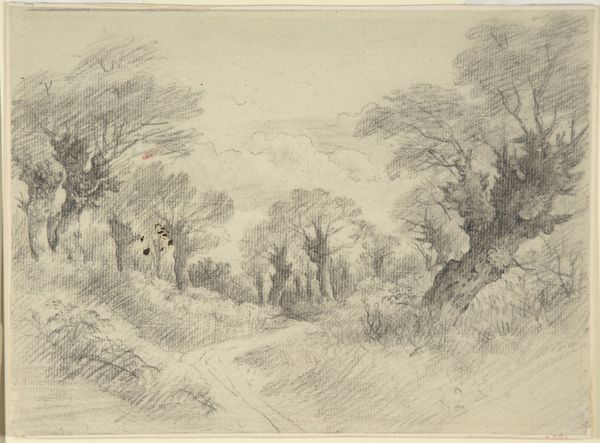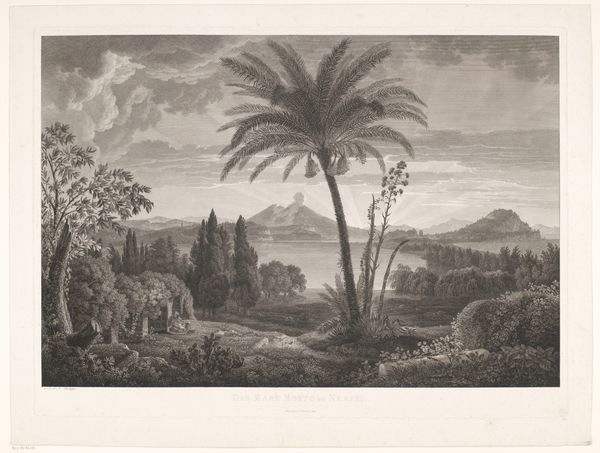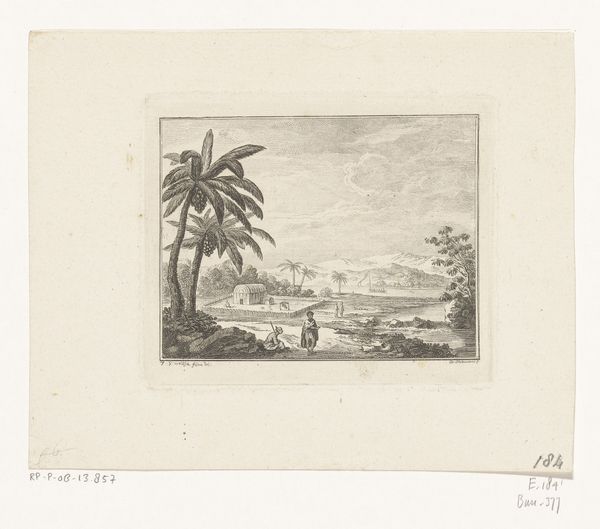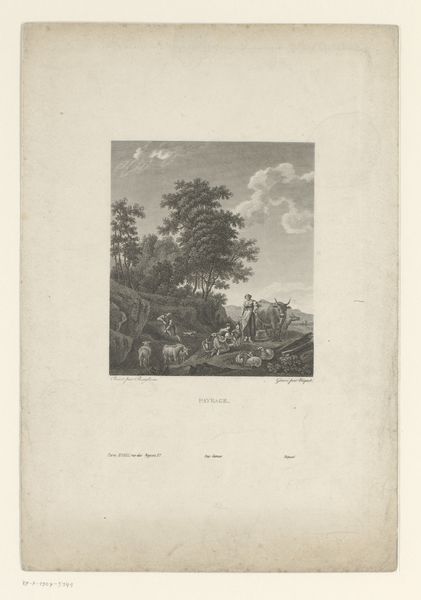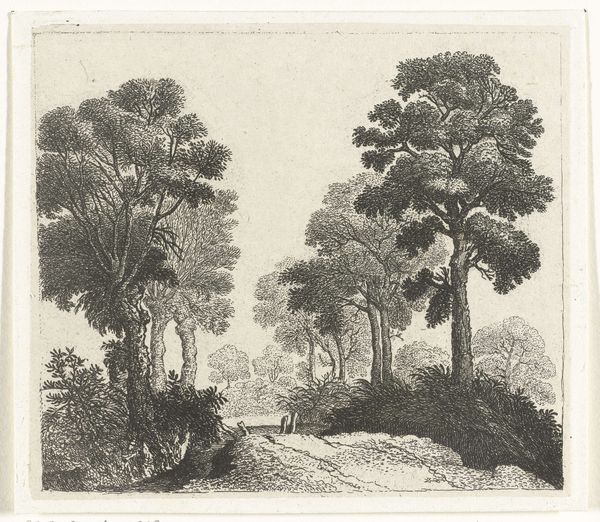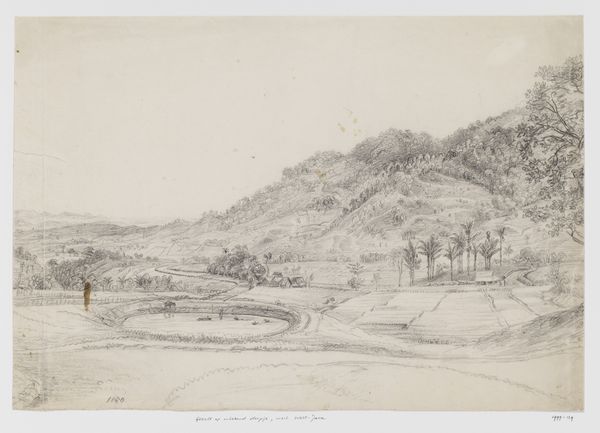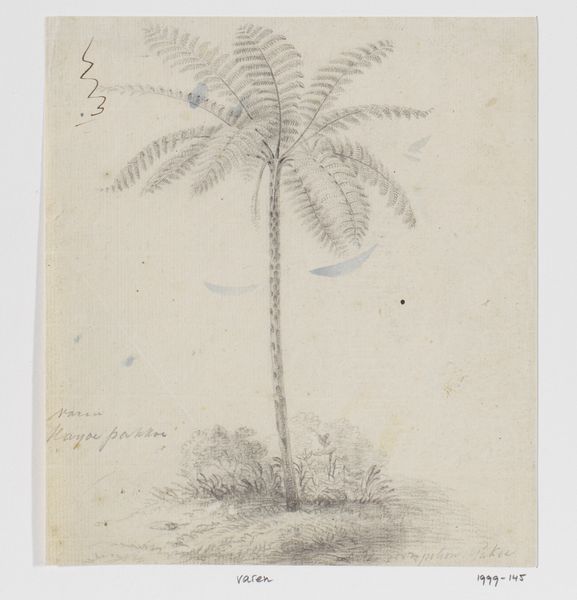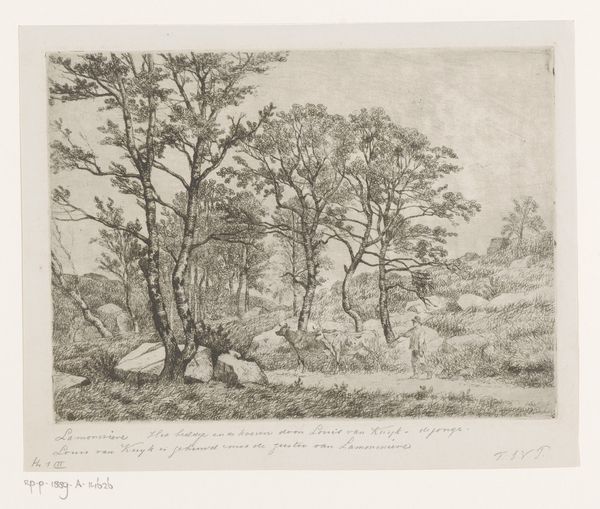
drawing, plein-air, watercolor
#
drawing
#
water colours
#
plein-air
#
asian-art
#
landscape
#
watercolor
#
romanticism
#
mixed medium
#
botanical art
#
watercolor
Dimensions: height 204 mm, width 235 mm
Copyright: Rijks Museum: Open Domain
Editor: This watercolor and ink drawing, "Bomen in berglandschap Java," created by Adrianus Johannes Bik sometime between 1816 and 1846, is interesting! There's a blend of delicacy in the rendering of the trees and a grandness in the mountainous backdrop, but it feels a bit muted. What jumps out at you when you look at this piece? Curator: What immediately grabs my attention is the tension between scientific observation and Romantic idealization so prevalent during the period of Dutch colonialism. We see the artist meticulously documenting the exotic flora of Java – these studies often served as important colonial records. But the muted tones, the overall composition... it also romanticizes the landscape, turning it into a picturesque scene ready for European consumption. Do you see that tension at play? Editor: I think I do. It’s like it's caught between being a scientific document and a souvenir. So, the act of depicting this landscape… was it inherently political? Curator: Absolutely. The representation of a colonized land is *always* political. Consider that most Europeans back home would never experience Java firsthand. This image, circulated and exhibited, shaped perceptions of the colony. It suggests control and knowledge, both key components of colonial power. How do you think that impacted the consumption and display of this art? Editor: It makes me think about who had access to these images and how they reinforced existing power structures. Someone back in the Netherlands might see this and feel a sense of ownership or superiority over Java, based solely on this romanticized depiction. Curator: Exactly! The reception of these works played a crucial role in shaping the narrative of Dutch colonialism. The "exotic" was made palatable and easily consumed. It highlights the important intersection between art, power, and cultural perception. Editor: That gives me a whole new perspective! It's not just a pretty landscape; it's a statement about control and representation. Curator: Precisely! It reveals how art actively participated in shaping our understanding of history and political dynamics.
Comments
No comments
Be the first to comment and join the conversation on the ultimate creative platform.
